The Economics and Statistics Division maintains archives of previous publications for accountability purposes, but makes no updates to keep these documents current with the latest data revisions from Statistics Canada. As a result, information in older documents may not be accurate. Please exercise caution when referring to older documents. For the latest information and historical data, please contact the individual listed to the right.
<--- Return to Archive
For additional information relating to this article, please contact:
August 23, 2022DEATH COUNTS AND EXCESS MORTALITY, JUNE 2022 The first death attributed to COVID-19 in Canada was reported in British Columbia occurring on March 8, 2020. As of August 19, 2022 the Public Health Agency of Canada's daily epidemiology update reported that COVID-19 has caused the death of 43,505 people in Canada.
Statistics Canada has provided provisional information on deaths in Canada up to June 4, 2022. This includes deaths attributable to all causes; fluctuations from one week to the next may be attributable to many different causes of death. The data does not include all deaths that occurred during the reference period. Not all provinces have reported their results up to June 4; only Alberta and British Columbia have reported to this date. Information is not complete for recent weeks in:
- Newfoundland and Labrador (to May 28, 2022)
- Prince Edward Island (to December 11, 2021 unchanged in recent months)
- Nova Scotia (to October 23, 2021 unchanged in recent months)
- New Brunswick (to December 11, 2021)
- Quebec (to May 28, 2022)
- Ontario (to March 12, 2022)
- Manitoba (to June 26, 2021)
- Saskatchewan (to May 7, 2022)
With limited information from several provinces, national estimates are available up to April 23, 2022.
A comparison of deaths in recent years with the number of deaths reported in similar weeks in years prior to 2020 allows highlights whether mortality is higher than usually observed at that time of year. The number of deaths reported in each week is represented below as a ratio of deaths per 1 million residents (population as of July 1 of the year; for 2022 deaths per 1 million residents are based on populations as of July 1, 2021). Based on observed historical trends, Statistics Canada has also estimated the expected number of deaths for each week and compared this with observed deaths, adjusted where possible reflecting provisional data. Estimates of expected deaths are presented with a 95 per cent confidence interval.
There is some evidence of excess mortality from January to the end of April of 2022, coinciding with the omicron wave of the pandemic. In these months, there has been elevated death counts (above confidence intervals for expected mortality) in Quebec, Ontario, Saskatchewan, Alberta and British Columbia as well as some weeks in Newfoundland and Labrador. For Newfoundland and Labrador, and Ontario, excess mortality has faded and deaths slowed to be more in line with expectations in the most recent weeks of data. In Saskatchewan, Alberta and British Columbia, the level of mortality fell briefing back into expected ranges before rising in the most recent data points.
Data for Manitoba remain lagged while there have been no updates to results for Nova Scotia and Prince Edward Island (none of these provinces reported excess mortality in their most recent results).
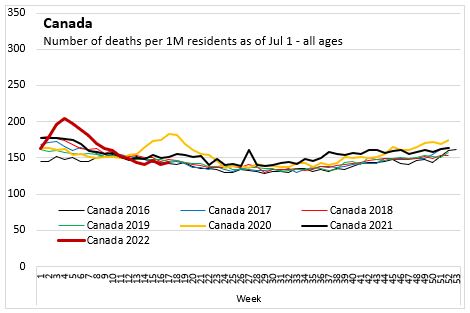

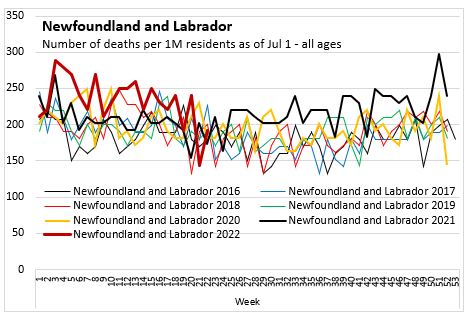
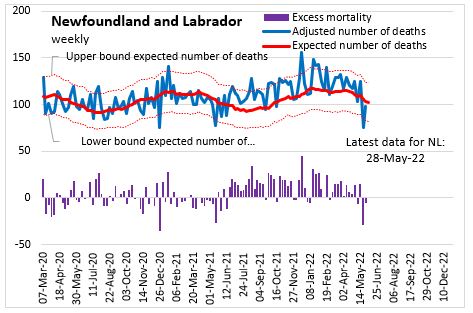
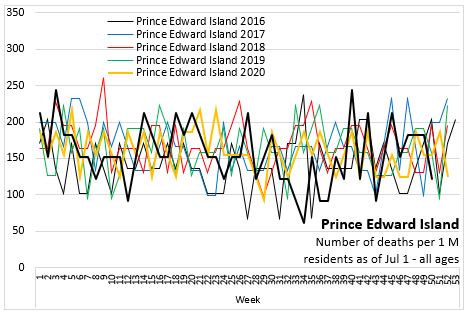

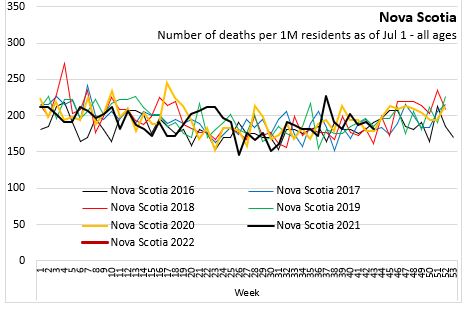
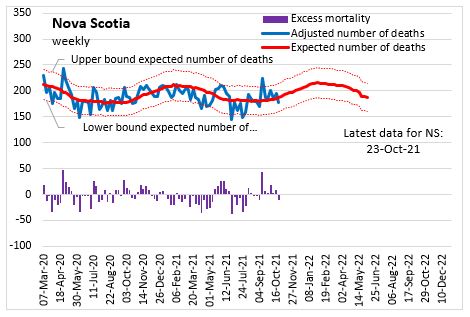
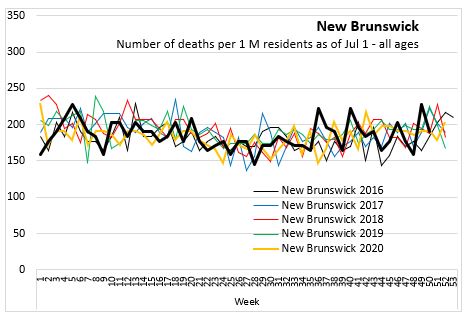
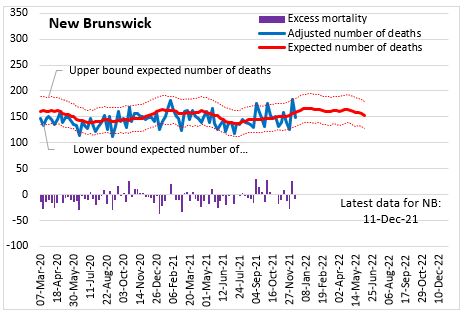
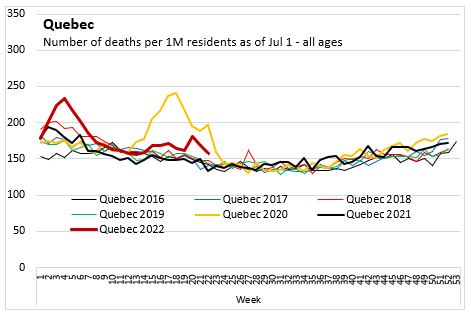
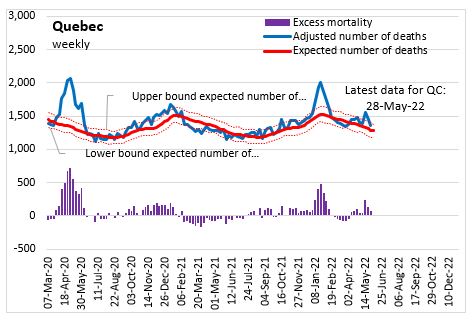
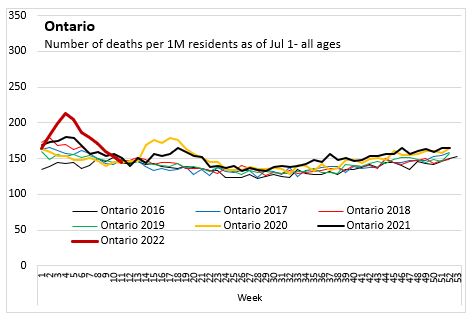
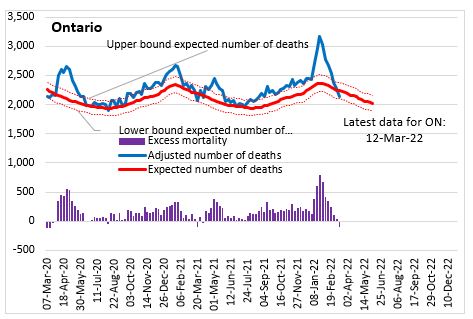
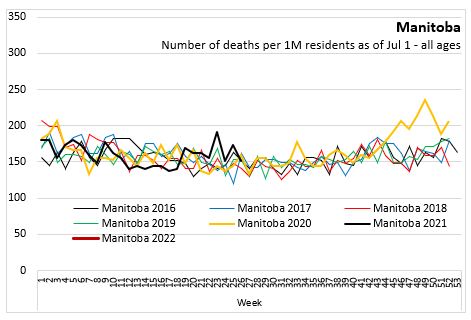

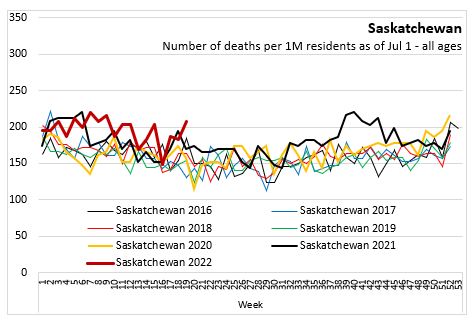
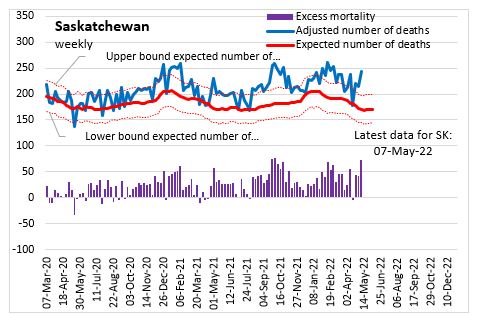

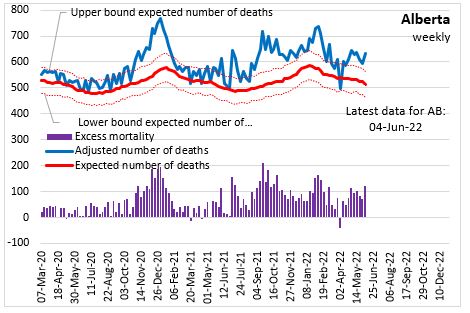
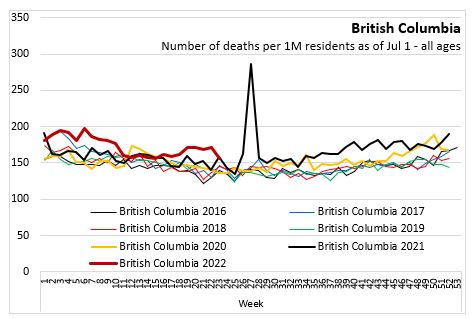
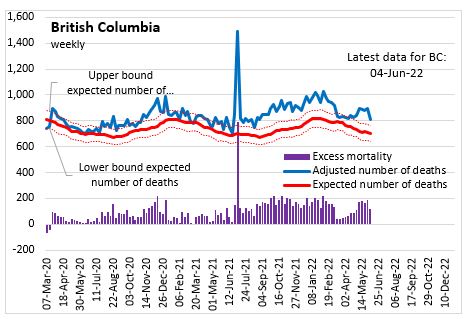
Source: Statistics Canada. Table 13-10-0768-01 Weekly death counts, by age group and sex; Table 13-10-0784-01 Adjusted number of deaths, expected number of deaths and estimates of excess mortality, by week; Public Health Agency of Canada. COVID-19 daily epidemiology update
<--- Return to Archive